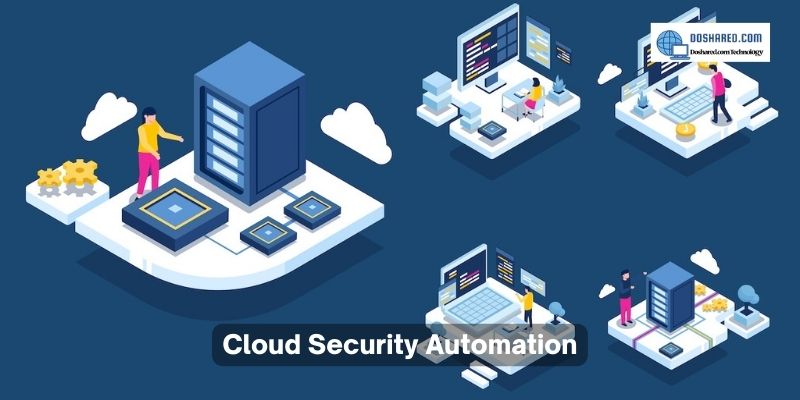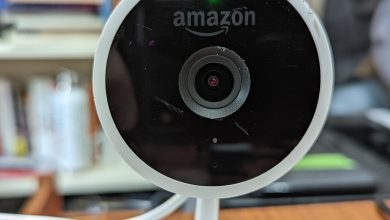Cloud Security Automation: 5 Steps For Successful
Cloud Security Automation is becoming increasingly important as organizations move their data and applications to the cloud. With the rise of cyber threats and the complexity of cloud environments, automating security processes can help organizations improve their overall security posture and reduce the risk of data breaches. In this article, Doshared.com will explore five steps for successful cloud security automation that can help your organization stay secure in the cloud.
Contents
What is cloud security automation?

An approach to cloud security known as cloud security automation uses automated tools and procedures to safeguard cloud data, infrastructure, and applications. It combines a variety of strategies, tools, apps, and processes to safeguard an organization’s cloud environments, is an approach to cloud security rather than a single product or platform. At least three areas of cloud infrastructure management are frequently automated as a result:
- Infrastructure security: Rule engines can be used by security teams to identify and fix security problems in a cloud environment.
- DevSecOps: Frameworks, controls, and checks for security can be baked right into the DevOps pipeline by security teams.
- Application security: Automation in the CI/CD pipeline can be used by security teams to speed up deployment and stop any potential application and library vulnerabilities.
Because it cuts down on the time needed to adopt security rules, the use of automation in cloud security offers many advantages over traditional and manual approaches. It also strengthens an organization’s security posture with standardized processes. This strategy has become very popular in recent years.
95% of the IT, cloud, and security experts questioned for 2020 research by Fugue agreed that security automation will improve their cloud security posture. Because of the growing reliance on hybrid cloud infrastructures, IT systems (both cloud and on-premise) are becoming more complex, and security teams will need to develop more automated security procedures to properly secure their organization’s digital assets.
3 biggest benefits of automation of cloud security

Reducing product development cycle times
Without spending a lot of time, it is possible to have a strong security posture by using the appropriate tools, techniques, and processes. Time to market may be slowed by conventional, manual methods, but cloud security automation can cut months off the time it takes to deploy security frameworks during development. In reality, automation of cloud security technologies may guarantee that cloud applications are created from the beginning in compliance with legal requirements like SOC 2, PCI-DSS, HIPAA, HITRUST, and GDPR.
Lowering security expenses
Cloud security automation can dramatically cut down on the amount of human labor required, lowering security expenses without compromising the overall security posture. Security teams can, for instance, use automation to scan container configurations for known security vulnerabilities, use infrastructure as code to speed up recovery from failures, tag assets (like instances or accounts) to make managing cloud assets simpler, and use automated vulnerability scanners to find vulnerabilities throughout the cloud environment. Even though these are just a few possible solutions, it is likely that each firm will have different security requirements. Regardless of their industry, all firms will be required to implement a certain minimum set of security criteria; therefore, automation will enable the majority of enterprises to cut expenses.
Enhancing the state of security
By lowering configuration errors and the likelihood of a security breach, it enhances an organization’s security posture. To guarantee consistent and proper configurations are implemented during an application’s initial development, using DevOps-as-a-service tools is a viable strategy. Utilizing automated remediation tools to quickly find and fix configuration issues is another. The use of automation to reduce this risk will probably continue to be a major trend in cloud security over the coming years, given that configuration errors are the leading cause of data breaches in the cloud.
Cloud Security Automation: 5 Steps For Successful
Step 1: Build out Infrastructure automatically.
Engineers are spared the burden of manually setting security groups, networks, user access, firewalls, DNS domains, and log shipping, among other things, by automating infrastructure buildout. Engineers are much less likely to commit security errors as a result.
Additionally, because they only need to modify the scripts—not the instances—to make the modifications, the security team need not worry about following best practices each time they start up a new instance.
Step 2: Automated Script

In traditional IT, a company’s system engineers must labor diligently to manually patch each server in response to a zero-day vulnerability or any other significant security issue. However, automating scripts simply needs one line of the manifests to be changed in order to make sure the recently released version is being used instead.
These script resources for automation are declarative management solutions that set up servers, virtual machines, or even bare metal servers automatically.
These scripts prepare each newly launched instance for production, doing security configuration chores such as ensuring central authentication, setting up intrusion detection systems, and enabling multi-factor authentication.
Step 3: Automate Deployments
Although one of the finest DevOps implementation strategies is automating deployments, this strategy can also enhance an organization’s security posture. Deployment automation ensures that updates to the DevOps tool script are automatically applied to all instances and servers in the event of a zero-day vulnerability. One system engineer can now respond swiftly to threats thanks to this.
Step 4: Security Monitoring Automation

It is essential to monitor the complete infrastructure through a single interface, given the current trend of hybrid and multi-cloud systems that serve specific apps. It might be resource-intensive and time-consuming to locate and address the issue during a security assault and downtime.
Engineers are helped by automated security monitoring by providing the necessary intelligence to counter the assault and safeguard important assets.
Step 5: Prepare for the automation of the future.
Data balloons and hybrid settings will become commonplace within the next several years, rendering the current security method useless. Therefore, this is the ideal opportunity to build an automation team within or outside. Even though it might take months or even years to fully automate processes across hybrid environments, doing so will be far more beneficial than simply teaching staff members how to work less carelessly.
Conclusion
Cloud security automation is crucial for organizations in the cloud. Follow these five steps to successfully implement it: assess your security needs, select the right tools, develop automation workflows, test your automation, and continuously monitor and improve your security. By doing so, you can enhance your security posture and reduce the risk of data breaches.
Conclusion: So above is the Cloud Security Automation: 5 Steps For Successful article. Hopefully with this article you can help you in life, always follow and read our good articles on the website: Doshared.com




